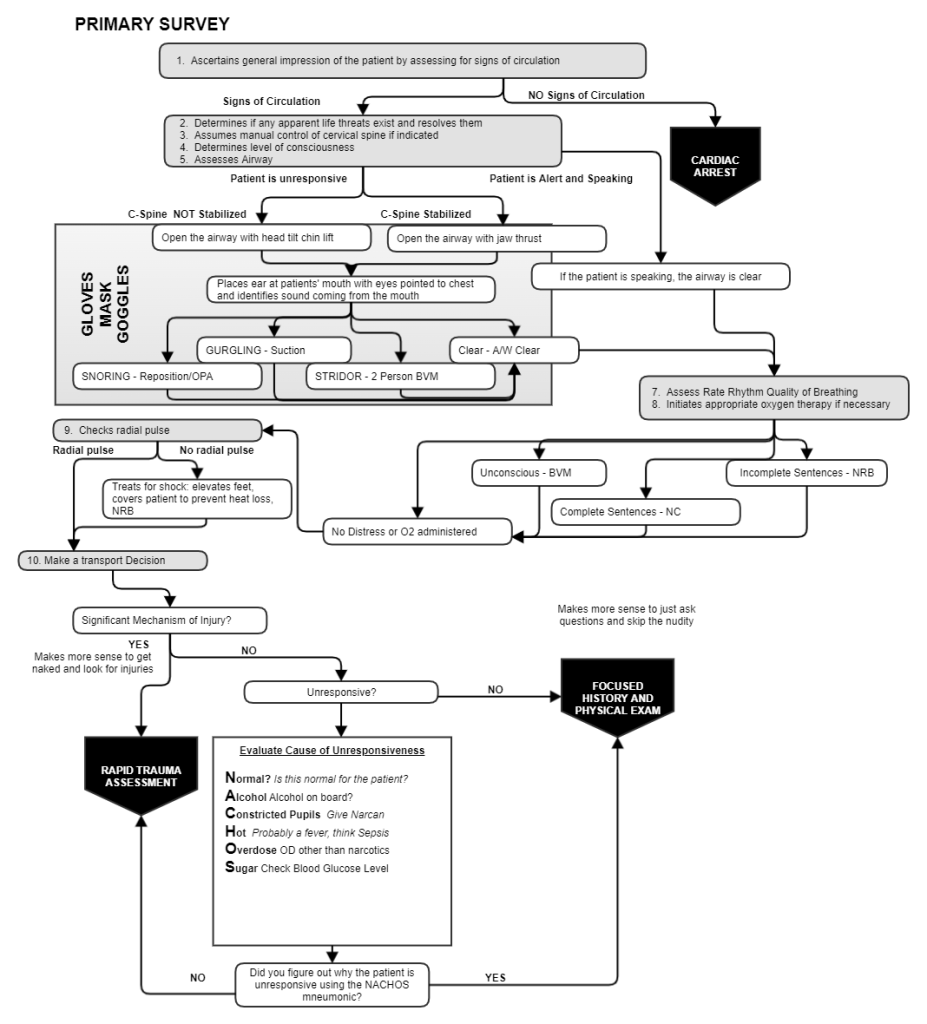Finding And Treating Shock (hypoperfusion)
Published .
The first clue is that there is no radial pulse

The primary survey is how the medics actually meet the patient. During this initial meeting, the medics determine if the patient needs CPR, is conscious, has a clear airway, needs oxygen or ventilation, and is in shock. The first clue that that the patient may be in a compensated or decompensated shock is the respiratory rate. A rapid respiratory rate can mean respiratory distress or can be an early sign of shock. A weak or absent radial pulse is solid indication that the patient experiencing shock. Once shock has been identified, treatment for shock should begin immediately:
- Prevent heat loss (by covering with a blanket)
- Administer oxygen either by non rebreather mask or bag valve mask
- Elevate feet (if possible)
Since shock can manifest due to cardiac, hypovolemic, distributive (sepsis, anaphylaxis), or obstructive reasons, shock can be difficult to detect and treat. Eventually, the cause of the patient’s shock needs to be determined so that the underlying problems can be addressed. Good documentation of history of patient complaint, vital signs, and other physical findings can be useful for those downstream in the continuum of healthcare. Shock that is unidentified and untreated is practically a death sentence. The ambulance crew would be most effective if they were able to communicate these clues to the hospital as they rapidly transport the patient.
Other signs and symptoms of shock
- Extreme thirst
- Restlessness and anxiety
- Rapid, weak pulse
- Rapid shallow respirations
- Mental status changes
- Pale, cool, moist skin
- Decreased blood pressure
Once the patient has been loaded into the ambulance, the medics will need to be vigilant in their continual search for early signs and symptoms of shock as they manifest. Treating any obvious causes of shock such as uncontrolled bleeding and treatment for shock should continue while enroute to the hospital.
